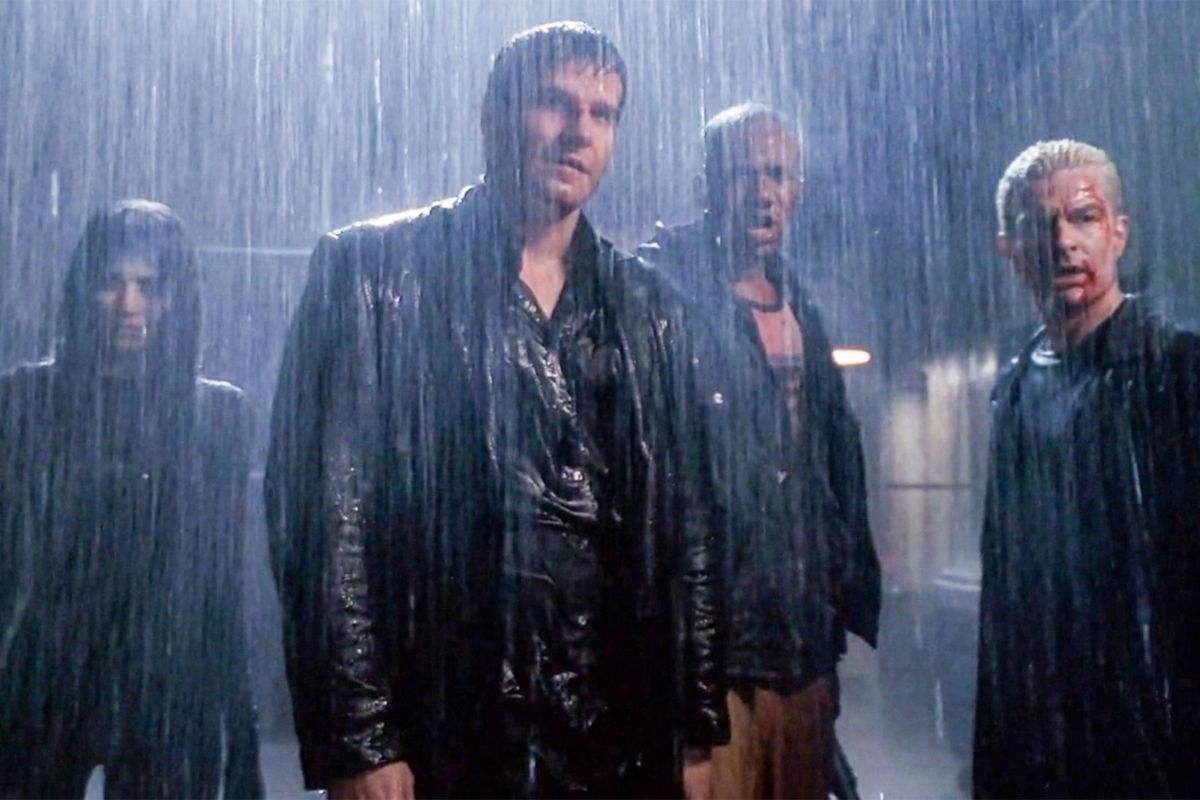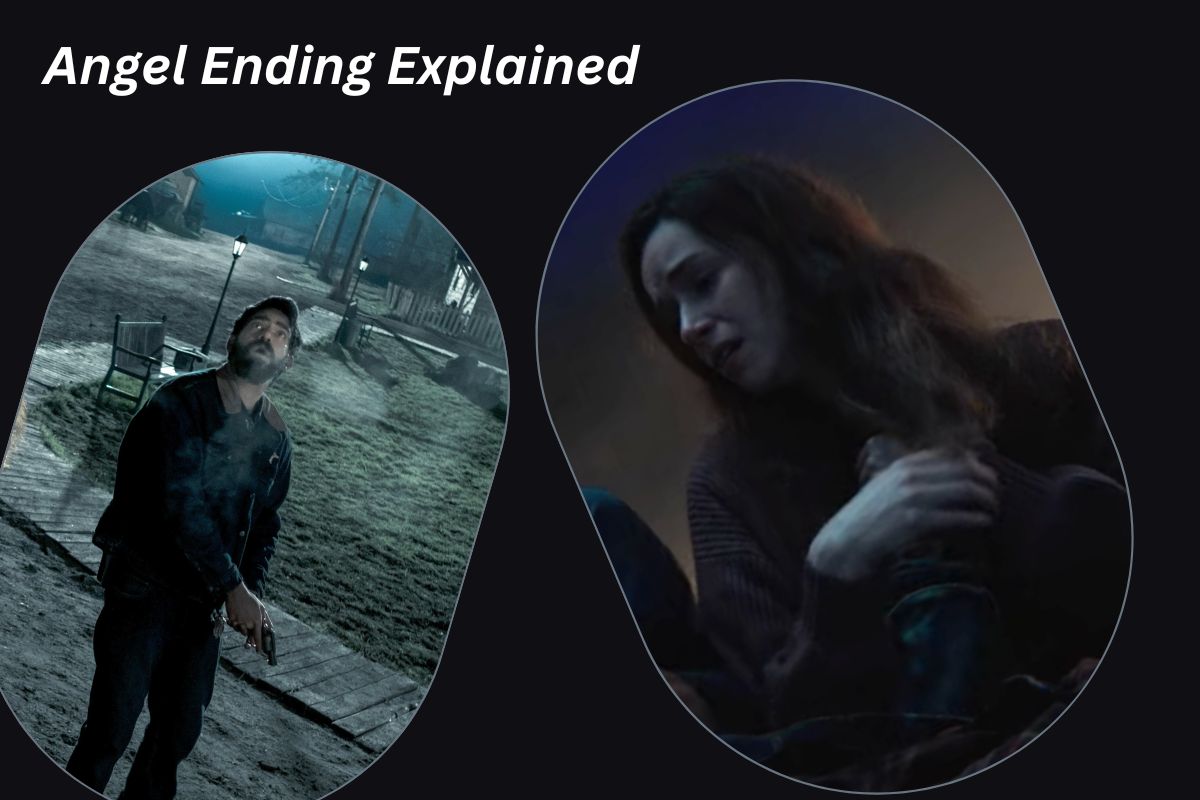Angel Ending Explained: What transpired in the series finale of Angel, Joss Whedon’s Buffy the Vampire Slayer spin-off, and what followed for the vampire with a soul? Despite not being intended to end the series, Angel’s series finale, “Not Fade Away,” which debuted in May 2004, serves as a good conclusion.
Angel proved to be a worthy counterpart to Buffy the Vampire Slayer throughout the course of its five-season run by adopting a darker, slightly more mature stance and better-developing characters who had previously appeared on Buffy, such as Cordelia, Wesley, and of course, Angel himself.
After saving the world in the Buffy series finale, Spike joins the team in the final season, and the Angel Investigations team once more faces the forces of evil. Due to the unexpected cancellation of Angel in season 5, plotlines that were supposed to go longer had to be finished much sooner.
As a result, “Not Fade Away” had to wrap up the conflict with Wolfram & Hart’s Senior Partners. Even though the conclusion itself isn’t entirely conclusive, Whedon had ample time to twist the events into a conclusion.
Angel Ending Explained
The team’s final stand against the Senior Partners is the focus of Angel’s series finale, which takes place after several cast members, including Elizabeth Röhm, leave the show. To accomplish this, the team must engage in combat with the Circle of the Black Thorn, a division of Wolfram & Hart who act as the Senior Partners’ agents on Earth.
More Entertainment News:
- After The Events Of “Chainsaw Man” Who Does Denji End Up With? Explained
- How Did Makima Live After Being Shot In Episode 8 Of Chainsaw Man?
To prove his commitment, Angel infiltrates the organization, enunciating the prophecy and giving up any possibility of becoming human. The squad then has one more day on Earth, and Angel informs them that they’re most likely going to pass away: Angel visits his son Connor, Gunn assists Anne at a homeless shelter, Lorne gives a performance, Wesley takes care of Illyria, and Spike gets wasted and delivers a poem he first read in 1880.

Wesley perishes as a result of the group’s successful execution of their objectives inside the Circle of the Black Thorn in the Buffy spinoff Angel. However, the Senior Partners dispatch an army of demons to Earth, so the conflict is not yet over. Angel, Gunn, Spike, and Illyria, the remaining members of the gang, are ready to fight them.
The song “Not Fade Away” ends as Angel takes a sword and declares, “Let’s get to work,” with rain falling to heighten the sense of doom. Although Whedon disputes the notion that this was a cliffhanger, it undoubtedly seemed like one at the time.
There is a want to witness the conflict and learn who survives, but the climax — like the series as a whole — ends abruptly and without a satisfying resolution. It may have been an intentional action by the contentious showrunner Joss Whedon, but it divided fans at the time and left many wondering what had occurred, especially since there was no Angel season 6 in sight.
Angel Was Supposed To Have A Season 6
With Whedon and the rest of the cast and crew anticipating that The WB network will renew it for a sixth season, Angel season 5 wasn’t supposed to be the end of the show. The network then abruptly ended the show, which shocked everyone involved, and was described by Whedon as “Healthy Guy Falls Dead From A Heart Attack.”
James Marsters, who played Spike, later shared the thoughts when he stated to The AV Club: “There’s no way they’re going to cancel us now, we were all thinking. … The issue was that, despite Joss’s propensity for planning ahead, he was entirely unprepared for this one and had neither set aside money nor developed a plot to wrap up Angel’s saga.”
Angel’s season 5 ratings were actually higher than those of season 4, making the decision not to renew the show even more surprising. However, the most common excuse given for the decision is that Whedon pushed John Levin, WB’s Head of Entertainment, for a decision sooner rather than the usual mid-May renewal.
When compelled to respond, Levin decided to cancel Angel because other plans were in limbo and there were several shows in the works. Although there have been numerous reports regarding what Whedon’s plans for the Buffy spinoff Angel season 6 entailed, he had to modify season 5 to give it a conclusion and tie up some loose ends.
Illyria either becoming more like Fred or Willow being able to distinguish between the two would have been narrative points, and Seth Green’s Oz was tied to a return to assist Nina, who was intended to become a more regular feature.
What Happens To Angel In The Comics?
Despite his insistence that Angel’s series finale didn’t end on a cliffhanger, Joss Whedon did decide to carry on with the plot, albeit not on television. Angel: After The Fall picks up where “Not Fade Away” left off, continuing Whedon’s decision to let Angel go on in comic book form after the success of the Buffy the Vampire Slayer comics.
After taking a stand against the Senior Partners, the whole city of Los Angeles has been consigned to hell in the Buffy show spinoff comics Angel: After The Fall. Of course, Angel keeps up the good fight as best he can, teaming up with a dragon that the Senior Partners had originally sent to kill him.
Illyria, who has lost control of her abilities and occasionally transforms back into Fred, guards Spike as Connor, Nina, and Gwen work to create a location where people can stay safe from demons. Gunn and Wesley suffer the worst outcomes.
Wesley, even after his death, is still contractually obligated to Wolfram & Hart since he exists in an incorporeal form, while the former has been transformed into a vampire who traps victims while pretending to be in need of rescue. Angel was later discovered to have been made mortal by the Senior Partners in order to lessen his likelihood of challenging them.
https://twitter.com/AngelStudiosInc/status/1613682568959823872
Angel keeps fighting, taking on the Lords of Los Angeles, but he must rely on glamour to make it seem like he is still a vampire, a trick that eventually wears out. When a fresh army of demons is dispatched to save Angel from death, he learns that the Senior Partners’ plans depend on him still being alive.
He incites Gunn to kill him, and as a result of his passing, the Partners return things to the state they were in before Los Angeles was damned. Angel returns to being a vampire, Gunn is prevented from becoming one, and the team is praised for saving the city. After that, Angel departs into the night to continue aiding the defenseless.
The Angel comics series in the Slayerverse is stuffed full of tales of what transpired after the show ended, with seven main series, fourteen miniseries, and six one-shots to its credit. In 2022, they are still producing comic books, some of which are regarded as canon and others which are not.
Later in the show, Angel and Faith teamed together, and the result was the comic book series Angel & Faith, which is now in its tenth season. The most well-known comics to date feature the duo Angel and Faith in combat with evil forces.
The first comic of the tenth season shows Faith beginning a new chapter in her life by killing the undead and then “going corporate,” while Angel, who avoided the end of the world, is hovering over a wild flurry of supernatural activity in London. The tale will undoubtedly continue in comic books, despite the Angel series’ contentious conclusion.
Final Lines
Leave your comments if you enjoyed this article. To keep up with the newest forms of entertainment, bookmark this Journalistpr.com. Page and visit it often.

Leave a Reply